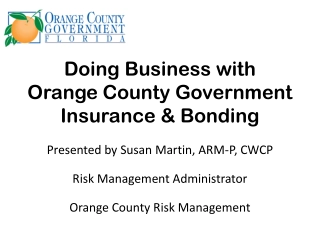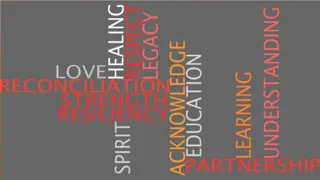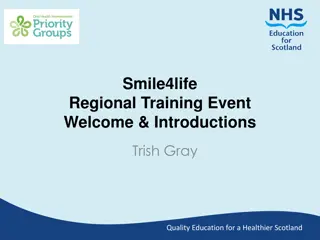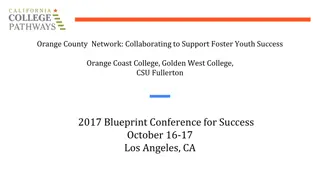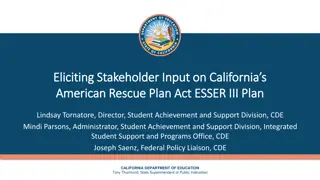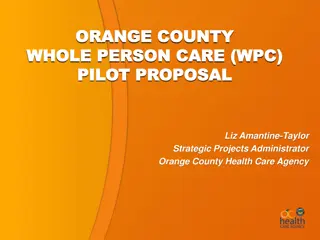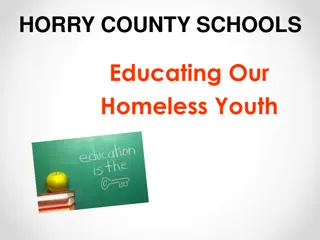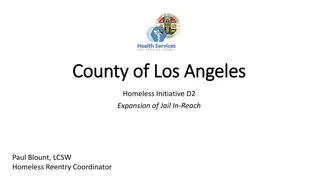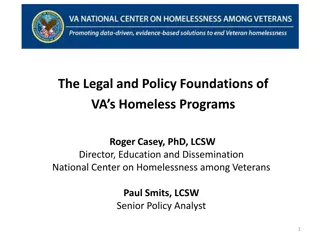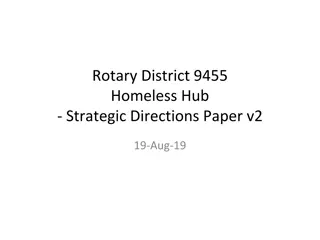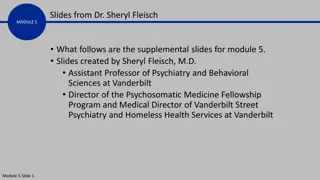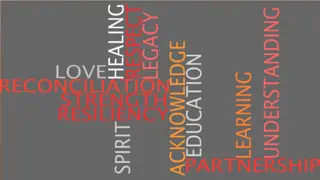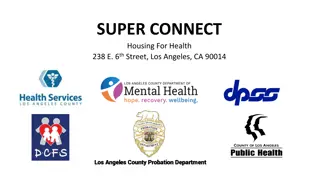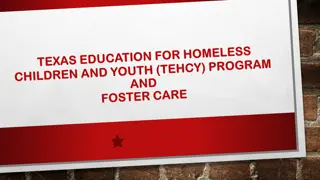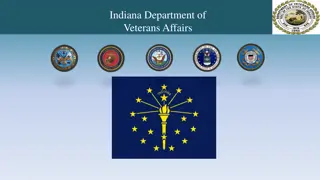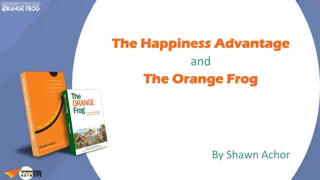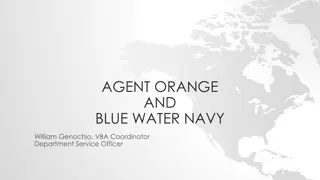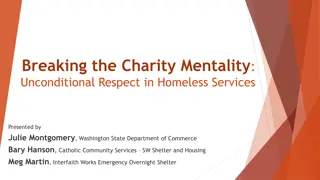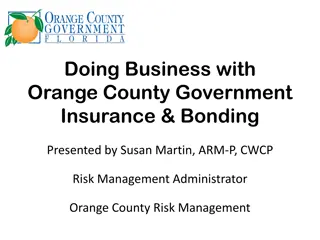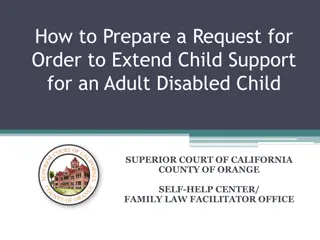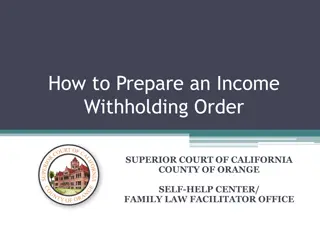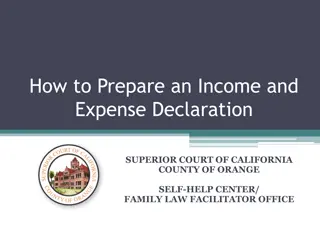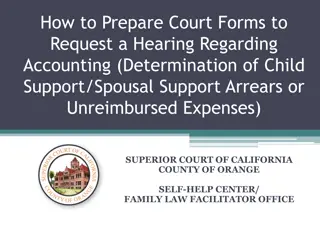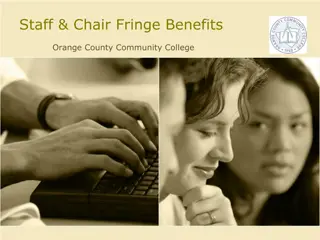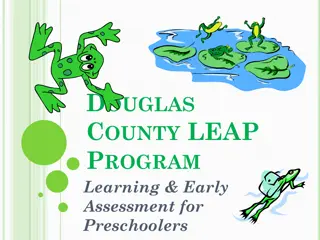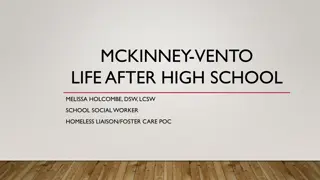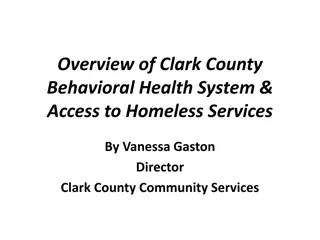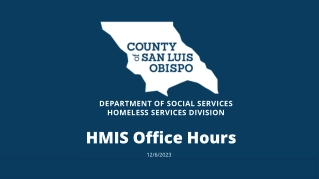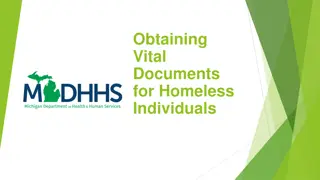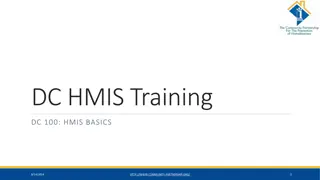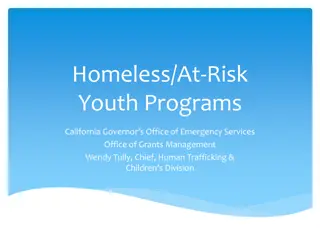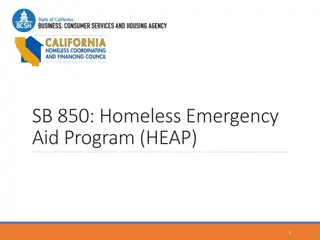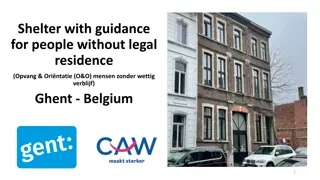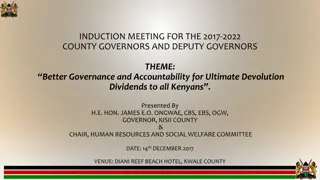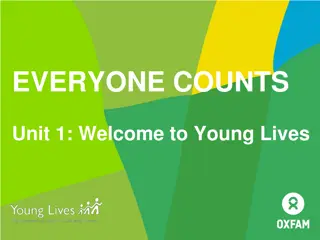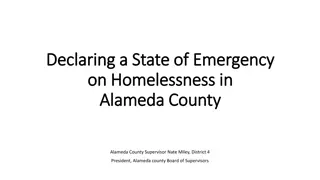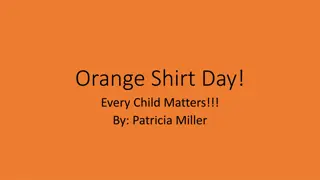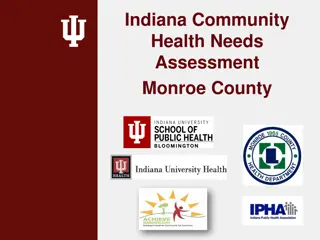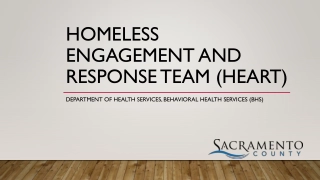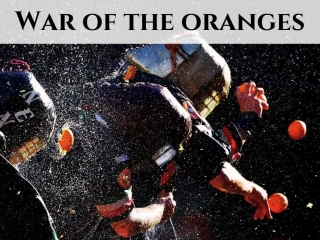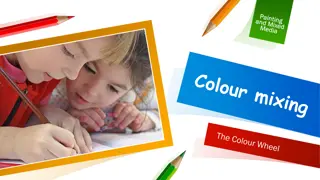Exploring the Lives of Homeless Children in 'Homeless: The Motel Kids of Orange County'
"The documentary 'Homeless: The Motel Kids of Orange County' sheds light on families living in discount motels near Disneyland, struggling to make ends meet. It follows the children facing harsh realities of poverty and showcases the positive social changes through Project Hope School. Advocates and the community play pivotal roles in supporting these kids, emphasizing the importance of education and community bonds amidst challenging circumstances."
Download Presentation

Please find below an Image/Link to download the presentation.
The content on the website is provided AS IS for your information and personal use only. It may not be sold, licensed, or shared on other websites without obtaining consent from the author. Download presentation by click this link. If you encounter any issues during the download, it is possible that the publisher has removed the file from their server.
E N D
Presentation Transcript
Homeless: The Motel Kids of Orange County Megan Fleeger, Sean Cusack, Bella Miller, Camille Taylor, Jadyn Shipman
Summary Plot: Homeless: The Motel Kids of Orange County is about families that reside in discounted motels right outside of Disneyland. The documentary follows the lives of the children in particular as they, and their families, are forced to live paycheck to paycheck, hoping for something to change. Main Characters : We get to see snippets of how some of these very real families live through the eyes of Rudee, Dylan, Deanna, Dilan, Ben, Celine, Brenda, Meygan, Josh, Zack, Gabriel, Cassidy, Jennifer, and Kiera.
Summary (Cont.) Topic of Discussion: This film scratched the surface about what in means to be a child living in poverty Setting: Within walking distance of Disneyland, California 2010 https://www.youtube.com/watch?v=HznOyrzJMN0
Positive Social Change Project Hope School Open year-round No district limits Breakfast and lunch provided Meal Bags Clothes Donations Same outfit(s) Physical appearance; new found confidence Soup Kitchen It s not very good, but it s something to eat
Advocacy Teachers advocate for the kids never stop believing in them It s an unspoken rule that even if you come to school with the same clothes on for thirty days, no one will ask questions or judge. Children are taught about drugs and advised against them as early as second grade Siblings look after each other Older sister tries to keep her brothers in line at school, even though it s not her job It s sometimes the older child s job to take care of the babies in families since parents are working
Community Most of the kids that live in the motel attend the same school, Project Hope, and have built relationships through that. The community provides clothes and food to the kids and their families, through soup kitchens and local churches. The kids learn about drugs at a young age, because their community has heavy use, and it is important for them to learn about them so that they know the effects it can have on their body. Rudees mom stated that No matter where they live, it s a family environment.
Service A homeless shelter provides the families with a program where they are able to live in a motel, but the motel does provide the families with enough space to live happily Project Hope school is also a service to these kids, but the state provided meals have no nutritional value Once you re in the motel, it s very hard to get out (49:00).
What parts of the film do you see as outdated, or what social changes have been made since the film was released? Due to California s budget crisis, cuts were made to public education. Hope School lost two teachers, including Ms. Judy. Not as much money is being put into the program, probably due to tax cuts.
What parts of the film do you connect with the most? When using the word connect in the context of relatability it is hard for us to relate to such an extreme circumstance of homeless. However, we did notice the poor nutritional value in the state provided food. We saw this happen in our high schools with kids who were provided with free lunches. We could also relate to going on a field trip as a kid, and being able to escape worries, even though our worries were not as extreme
Do you have any critiques about the film? When asking questions, the interviewer sometimes crossed the line of being rude and too personal. For example, when asking one of the kids about his mom s boyfriend s (Eddie) death, she asked for explicit details that seemed inappropriate. Although she was doing her job as a reporter, it was clear that she was getting to personal when the parents became defensive in answering questions.
Who would benefit the most from watching this film? Anyone who is not in that situation, because not very many people are exposed to that on a day to day basis. Especially people our age because we are the next generation who are able to do something about the stark inequality in wealth
What course of action does this film call for or encourage? The film does not explicitly call for a change, but it does allude to the idea that more funds need to be put towards the education of homeless children. It also brings awareness to everyday people that there is a need to take part in humanitarian actions. The film demonstrates that food and clothing donations are a crucial part of the homeless means of survival.


